
Categories:
When it comes to owning guns, responsible gun ownership extends beyond just proper handling and storage. Regular maintenance and cleaning play an integral role in ensuring the safe and reliable operation of your gun. While cleaning a gun may seem like a straightforward task, it is crucial to prioritize safety during this process. One of the primary reasons for safe gun cleaning is accident prevention.
Guns are designed to contain immense power, making them potentially dangerous if mishandled. A thorough understanding of the gun’s mechanics, coupled with safe cleaning practices, can significantly reduce the risk of accidental discharge or injury. Furthermore, regular cleaning helps maintain the performance and longevity of your gun. Guns are exposed to various environmental elements such as dust, dirt, moisture, and debris that can accumulate over time.
Failing to clean these contaminants can lead to malfunctions or even permanent damage to critical components. Safe gun cleaning also allows for early detection of potential issues or wear on parts that may require attention or replacement. By inspecting each component carefully during the cleaning process, you can identify any signs of corrosion, rusting, excessive wear, or loose fittings that could compromise your gun’s functionality.
Lastly, adhering to safe gun cleaning practices demonstrates responsible gun ownership. It showcases your commitment to maintaining guns in optimal condition while prioritizing safety for yourself and others around you. In conclusion, safe gun cleaning is vital for accident prevention, maintaining performance and longevity of guns, early issue detection as well as demonstrating responsible gun ownership.
When it comes to safely cleaning your gun, having the right tools and supplies is crucial. Before starting the cleaning process, take a moment to gather all the necessary items. This ensures that you have everything within reach and minimizes the risk of accidents or mistakes. First and foremost, you will need a cleaning rod or bore snake. This tool allows you to effectively remove residue from inside the barrel of your gun.
Make sure to choose a rod or snake that is appropriate for your particular gun’s caliber. Next, grab a set of brass or nylon brushes in various sizes. These brushes are essential for scrubbing away stubborn debris from different parts of your gun without causing any damage. Additionally, get some cotton patches or cleaning cloths to apply solvents and lubricants during the cleaning process.
These patches help remove dirt and grime efficiently without leaving behind any lint. Furthermore, invest in high-quality gun-specific solvents and lubricants. These products are specially formulated to dissolve carbon buildup and protect against corrosion, ensuring optimal performance and longevity of your gun. Don’t forget about a small container for holding solvents while you work. This container should be shallow enough for easy access but deep enough to hold an adequate amount of solvent without spilling.
Lastly, keep some Q-tips or toothbrushes handy for reaching small crevices that are difficult to clean with larger tools. These fine-tipped brushes can be incredibly useful for detailing intricate parts like triggers or safeties.
Before beginning any cleaning or maintenance tasks on your gun, it is absolutely crucial to ensure that the weapon is unloaded and cleared of all ammunition. This step cannot be stressed enough as it forms the foundation of safe gun cleaning practices. Neglecting to follow this step can lead to accidental discharges and serious injury. To properly unload and clear your gun, follow these essential steps:
1. Find a Safe Area: Choose a well-lit, designated space away from distractions or potential dangers where you can work on your gun without interruption.
2. Remove the Magazine: If your gun has a detachable magazine, press the magazine release button (if applicable) and remove it from the weapon.
3. Chamber Check: After removing the magazine, pull back the slide or bolt to visually inspect the chamber area to ensure no round is present.
4. Visually Inspect: Double-check that both the chamber and magazine well are empty by visually inspecting them again.
5. Lock Open Mechanism: Engage the slide lock or bolt catch (if applicable) to keep the action open while you work on your gun.
6. Physical Verification: Always use your finger or a cleaning rod to physically check that there is no ammunition in either the chamber or magazine well before proceeding with any cleaning tasks.
By following these steps diligently each time you clean your gun, you will establish a habit of prioritizing safety throughout your gun care routine. Remember, even if you are confident that your gun is unloaded, always treat it as if it were loaded until proven otherwise through careful inspection.
When it comes to safely cleaning your guns, selecting an appropriate cleaning area is essential. This subtopic will provide you with valuable insights on how to choose a suitable space for gun cleaning, ensuring that you maintain a safe environment for yourself and those around you. First and foremost, it is crucial to select a well-ventilated area. Cleaning solvents emit fumes that can be harmful if inhaled in confined spaces.
Therefore, opt for an open space where fresh air circulates freely, such as a garage with the doors open or an outdoor area. Additionally, find a location that is free from distractions and interruptions. Cleaning guns requires focus and concentration. Any distractions can lead to mistakes or accidents. Choose a quiet spot where you can work undisturbed, away from family members or pets.
Furthermore, make sure the chosen area is well-lit. Adequate lighting is vital for inspecting each component of your gun thoroughly. Proper illumination will help you identify any potential issues or damages that may require attention during the cleaning process. Another critical consideration is the cleanliness of the workspace itself. Ensure that the surface where you place your gun and cleaning tools is clean and free from any debris or clutter.
A clear workspace minimizes the risk of accidentally knocking over solvents or small parts during disassembly. Lastly, keep in mind the importance of privacy when selecting your gun cleaning area. Guns are sensitive subjects for many people; therefore, it’s advisable to choose a discreet location to avoid unnecessary attention or potential misunderstandings.
Disassembling your gun is a critical step in safe gun cleaning. Whether you are a seasoned gun owner or a beginner, it is essential to approach this process with caution and precision. Here are some important guidelines to follow when disassembling your gun for cleaning:
1. Unload the gun: Prior to disassembly, always ensure that your gun is unloaded and the magazine is removed. Double-check the chamber to verify there is no ammunition present. 2. Familiarize yourself with the manual: Every gun has its unique disassembly process outlined in its user manual. Take the time to read and understand these instructions thoroughly before attempting any disassembly.
3. Find a suitable workspace: Choose a well-lit, clean, and clutter-free area where you can work on your gun without any distractions. A dedicated gun cleaning mat or bench can help prevent small parts from rolling away or getting lost. 4. Use proper tools: Invest in high-quality tools specifically designed for guns maintenance such as screwdrivers, punches, and brushes that match your gun’s make and model.
Using incorrect tools may damage components or compromise functionality. 5. Follow a logical sequence: As you disassemble your gun, go step by step following the manufacturer’s instructions precisely. Avoid skipping steps or forcing parts apart as this can lead to irreparable damage. 6. Keep track of small parts: Some guns have numerous small components that need careful handling during disassembly. Use trays or magnetic mats to organize these parts systematically and prevent loss or confusion later during reassembly.
When it comes to maintaining guns, following proper cleaning techniques is essential for both safety and effectiveness. Here are some key guidelines to ensure a safe gun cleaning process. Firstly, always make sure your gun is unloaded before beginning any cleaning procedures. This simple yet crucial step prevents accidental discharge and potential harm. Remove the magazine and visually inspect the chamber to confirm it is empty.
Additionally, check that there are no live rounds in the immediate vicinity. Next, find a well-ventilated area with ample space to work on your gun. Adequate ventilation helps dissipate any toxic fumes that may be released during the cleaning process. Furthermore, having sufficient workspace allows you to properly disassemble your gun without risk of losing or misplacing components. Before disassembling your gun, carefully read its manual or seek guidance from an experienced individual who can provide specific instructions for your particular model.
Each gun has unique features and mechanisms that may require specific cleaning methods or tools. When disassembling the gun, organize its parts systematically to avoid confusion when reassembling later on. It is advisable to lay out all components in a logical order so that no part gets misplaced or forgotten during the cleaning process. While cleaning, always use appropriate tools and solvents recommended by the manufacturer or trusted experts in gun maintenance.
Using improper tools can result in damage to delicate parts or compromise their functionality. Lastly, take your time while cleaning; rushing through the process may lead to oversight or inadequate maintenance. Patience ensures that every part receives thorough attention and guarantees a safer shooting experience when you next use your gun.
When it comes to cleaning your guns, using high-quality cleaning solvents and lubricants is essential to ensure their longevity and optimal performance. Inferior products may not effectively remove dirt, debris, or fouling from your gun’s components, potentially leading to malfunctions or decreased accuracy. Therefore, investing in reputable brands that offer reliable cleaning solutions is a wise choice for every responsible gun owner.
Cleaning solvents are specially formulated to dissolve carbon buildup, powder residue, and other grime that accumulates in the bore and on other parts of your gun. Look for solvents specifically designed for the type of gun you own since different guns may require different cleaning agents due to variations in materials used or finishes applied.
Similarly important is using proper lubricants during the cleaning process. Lubrication ensures smooth operation by reducing friction between moving parts while also protecting against rust and corrosion. Quality gun oils or greases made explicitly for guns offer superior performance compared to generic lubricants.
When selecting solvents and lubricants, prioritize those with low toxicity levels as they are safer for both you and the environment. Additionally, opt for products that have been extensively tested by reputable organizations or have positive reviews from fellow shooters.
Remember, regular maintenance is crucial for preserving the reliability of your guns. By utilizing high-quality cleaning solvents and lubricants that are specifically formulated for your guns’ needs, you can help extend their lifespan while ensuring they remain safe and perform optimally whenever needed.
When it comes to gun cleaning, ensuring that each component is thoroughly cleaned is of utmost importance. Whether you are a seasoned gun owner or a beginner, taking the time to clean each part properly will not only enhance your gun’s performance but also contribute to its longevity. Here are some essential tips for cleaning each component thoroughly:
1. Disassembly: Before you start cleaning, always make sure your gun is unloaded and the safety is engaged. Carefully disassemble the gun according to the manufacturer’s instructions, paying close attention to small parts and their placement. 2. Bore Cleaning: The barrel is one of the most critical components requiring thorough cleaning. Use a bore brush attached to a cleaning rod, along with an appropriate solvent or bore cleaner, to scrub away residue and fouling.
Follow this up by running patches soaked in solvent through the bore until they come out clean. 3. Slide and Frame: Clean all surfaces of the slide and frame using an appropriate cleaner or solvent and a soft cloth or nylon brush. Pay special attention to areas prone to carbon buildup such as the breech face, firing pin channel, extractor, and slide rails.
4. Small Parts: Ensure that all small parts like springs, pins, and screws are properly cleaned as well. Use a small brush dipped in solvent or cleaner to remove any debris or buildup from these components. 5. Lubrication: After thorough cleaning, apply an appropriate lubricant sparingly on moving parts like slides rails, trigger mechanisms, and hinges – but avoid over-lubricating as excess oil can attract dirt.
After you have thoroughly cleaned your gun, it is crucial to store it safely to prevent accidents and unauthorized access. Here are some essential tips for storing your cleaned gun securely:
1. Lockable Storage: Invest in a dedicated storage container or gun safe that is specifically designed to secure guns. Ensure it is made of durable materials and features a reliable locking mechanism that cannot be easily tampered with. 2. Separate Ammunition: It is imperative to store your ammunition separately from your gun. Keep them in different locked containers or safes, ensuring they are inaccessible to unauthorized individuals, especially children.
3. Unloaded and Chamber Check: Before storing your gun, double-check that it is unloaded by removing the magazine and visually inspecting the chamber. Always assume a gun is loaded until proven otherwise. 4. Trigger Locks: Consider using trigger locks as an additional safety measure for added peace of mind. These devices prevent the trigger from being pulled and render the gun inoperable until the lock is removed.
5. Disassemble if Possible: If feasible, disassemble your gun before storage, separating its components and storing them in different locked containers or safes. This adds an extra layer of security as it makes the weapon unusable even if someone gains access to one part. 6. Secure Location: Choose a secure location for storing your cleaned gun, away from children, visitors, or potential burglars.
Avoid obvious hiding spots like under mattresses or in bedside tables; instead, opt for less predictable locations such as hidden compartments or within larger safes.
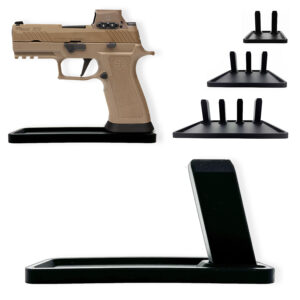
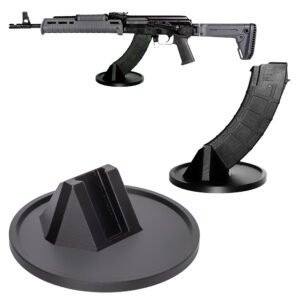


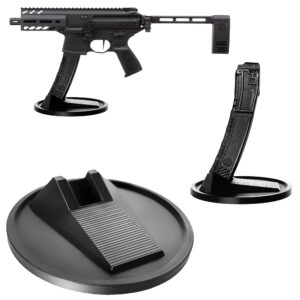
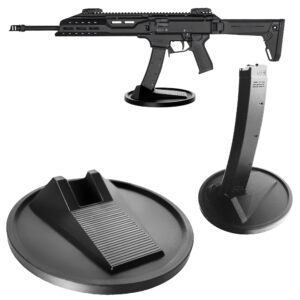

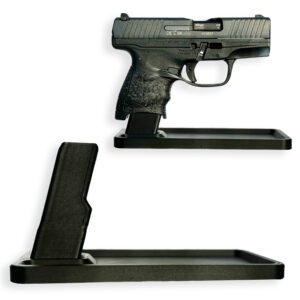
Colt
Colt M4 Carbine
Colt LE6920
Colt AR-15 A4
Daniel Defense
DDM4 V7
DDM4 V9
DDM4 V11
DDM4 ISR (Integrally Suppressed Rifle)
Smith & Wesson (S&W)
M&P15 Sport II
M&P15 Tactical
M&P15T
Bravo Company Manufacturing (BCM)
BCM Recce-16
BCM Recce-14
BCM MCMR Series
Aero Precision
M4E1 Series
AC-15
AR15 Pistol (Various Configurations)
Ruger
Ruger AR-556
Ruger SR-556
Ruger AR-556 MPR (Multi-Purpose Rifle)
Springfield Armory
Saint Victor
Saint Edge
Saint AR-15
PSA (Palmetto State Armory)
PSA PA-15
PSA AR-V
PSA Jakl (AR Pistol)
FN America
FN 15 Tactical Carbine
FN 15 Patrol
FN 15 DMR
Wilson Combat
Recon Tactical
Super Sniper
Protector Carbine
SIG Sauer
SIG M400 Tread
SIG M400 Elite
SIG M400 SDI
LWRC International
IC DI (Direct Impingement)
IC SPR
IC A5
Bushmaster Guns
XM-15 QRC
Bushmaster MOE
XM-15 Patrolman
Rock River Arms
LAR-15 Entry Tactical
LAR-15 Predator
LAR-15 Elite Comp
Stag Arms
Stag 15 Tactical
Stag 15L (Left-Handed Models)
Stag 15 Valkyrie
Noveske Rifleworks
Noveske Gen 4 N4
Noveske Space Invader (AR Pistol)
Noveske Recon
Anderson Manufacturing
AM-15 Optic Ready
AM-15 M4 Carbine
AM-15 Precision Rifle
Adams Arms
AA-15 Piston Rifle
P2 AARS (Adams Arms Rifle Series)
Black Rain Ordnance
SPEC15 Series
BRO Predator
Fallout 15
Diamondback Guns
DB15 Series
DB15CCMLB
DB15EB
Del-Ton Inc.
DTI-15
Del-Ton Echo 316H
Sierra 316M
Windham Weaponry
Windham SRC
Windham VEX-SS
Windham RMCS-4 (Caliber Conversion System)
Christensen Arms
CA-15 G2
CA-15 Recon
CA-15 Titanium Edition
Patriot Ordnance Factory (POF-USA)
Renegade Plus
P415 Edge
Revolution DI
LaRue Tactical
PredatAR
OBR (Optimized Battle Rifle)
LaRue Stealth 2.0
Battle Arms Development
Workhorse Patrol Carbine
BAD556-LW (Lightweight)
Authority Elite Rifle
Faxon Guns
Ascent AR-15
FX-19 (AR Pistol)
Streamline Ultralight Series
KE Arms
KE-15 SLT (Super Lightweight Tactical)
KE-15 Scout Carbine
Primary Weapons Systems (PWS)
MK1 MOD 2-M
MK116 PRO
MK107 (Piston AR Pistol)
ZEV Technologies
ZEV Core Elite Rifle
ZEV AR15 Billet Rifles
Franklin Armory
BFSIII AR-C1
Militia Model
F17-L (Chambered in .17 WSM)
Seekins Precision
SP15 DMR
NX15 Skeletonized Rifle
Havak Bravo
Aero Precision (Additional Models)
EPC-9 (Pistol Caliber ARs)
VG6 AR Rifles
Barrett Guns
REC7 DI
REC7 Gen II
CMMG
MK4 RCE
Resolute 300
Banshee (AR Pistol)
DPMS Panther Arms
Panther Oracle
Panther LR-308
H&K (Heckler & Koch)
HK MR556A1
HK416 (Military Variant)
Rock Island Armory (Armscor)
VR-80 Tactical AR (Shotgun AR Platform)
Troy Industries
Troy SPC-A3
Troy PAR (Pump Action AR)
Wilson Tactical
Tactical Recon AR
Protector Series
F1 Guns
FDR-15 Skeletonized Rifle
BDRx-15 Series
Juggernaut Tactical
JT-15
JT-10 Precision Rifle
AeroSurplus
Surplus AR-15 Rifles (Budget Models)
Thunder Tactical
AR-15 Basic Carbine
Tactical Builder Sets
Radical Guns
RF-15
Forged AR-Series
Dark Storm Industries
DS-15 Featureless Rifles
DS-10 Typhoon
DRD Tactical
Paratus
Aptus AR Rifles
Bear Creek Arsenal
BCA-15
AR Complete Upper Builds
Aero Survival Rifles (ASI)
ASR Tactical Series
Tactical Edge
WARFIGHTER Series
AR-15 Lightweight Rifles
Lone Star Armory
TX15 DMR
TX15 Carbine
HERA Arms
HERA H7
HERA AR-15 Lower Builds
IWI (Israeli Weapon Industries)
Zion-15
DRD Tactical
Tactical Modular Rifles
Quick-Takedown Rifles
V Seven Weapons
1776 Rifle
Hyperlite Rifle
Core Rifle Systems
Core15 Tac III
Core15 Patrol Rifle
Armalite (Original AR-15 Creator)
M15 Tactical
M15 A4 Carbine
DEF15 (Defensive Sporting Rifle Series)
PSA (Palmetto State Armory Additional Models)
PSAK-47 Hybrid (AR-AK Style Hybrid)
PSA Dagger (Pistol Caliber Configurations)
Odin Works
OTR-15
Odin Recon Rifle
Maxim Defense
MDX-508 PDX (Compact AR Pistol)
MDX-510 Rifle